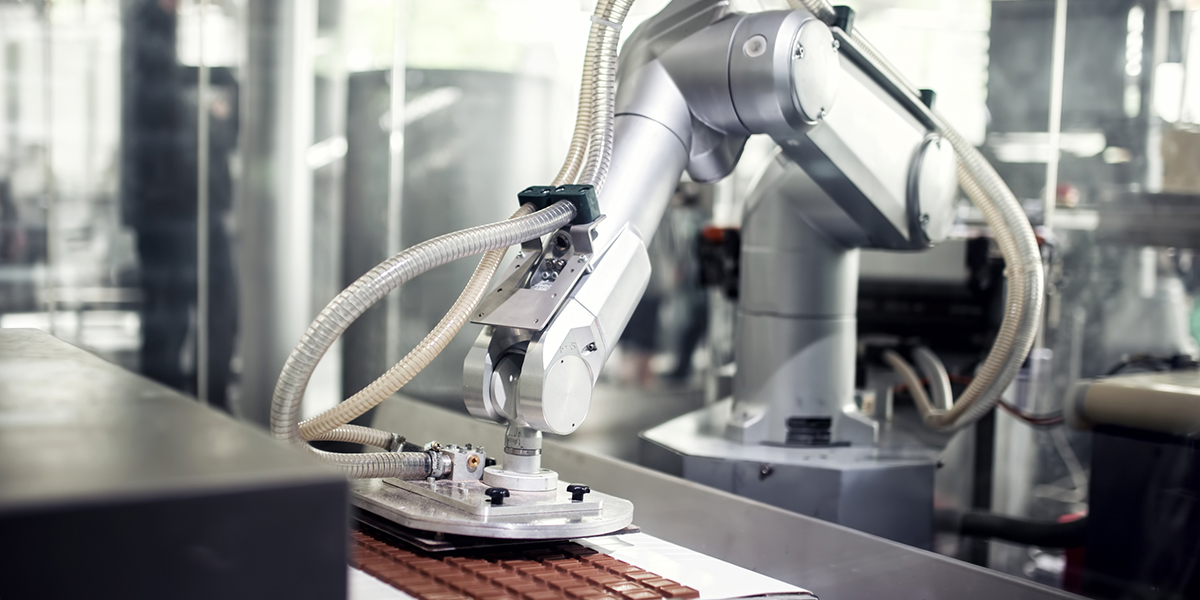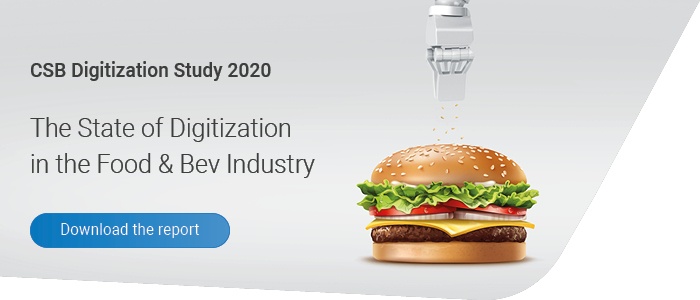Grand View Research estimated the world market for industry robots in the Food & Beverage industry in 2016 to approximately 1.2 billion USD. Market researchers forecast that the market will grow rapidly in the next few years - by roughly 13 percent per year. The reasons are obvious: robots increase efficiency in production, reduce costs especially in high-wage countries and improve quality by lower error rates.
Robot technology, which is established in practice in the manufacturing industry, now also seem to have arrived in the Food & Beverage industry. The decision-makers interviewed in the global CSB digitization survey 2018 think robots are one of the most exciting technologies in the Food & Beverage industry – ranking them even higher than artificial intelligence (AI) and blockchain. Robots are gradually conquering other fields of application in the food industry. Combining them with AI will boost their use even more.
Image processing also on the rise
Besides robots, other automation solutions play an increasingly important role in the Food & Beverage industry. One example is the industrial image processing. It helps to capture the data of the goods and even to grade them. Thus, enterprises can transfer their material flow automatically into their information flow already at Receiving. This step is decisive in the digital and smart factory. One example from the meat industry:
Industrial image processing can grade pork sides by specifying the percent shares of the premium parts ham, shoulder, belly and fore rib in Receiving. It controls the ideal processing of the meat parts at slaughter exit and literally makes the best out of the delivered pork sides.
ProMessa automates intralogistics and supply chain
However, all classical automation solutions can be substantially advanced by combining them with robot technology. Besides prevalent standard products, it pays off more and more for food companies to look for specific solutions or even help develop them. An innovative example is the Dutch meat producer ProMessa. Their entire intralogistics are controlled and monitored by software, including three automatic crate storage systems for reusables, large and small quantities, four integrated weigh labelers and picking sorter lines, an automatic dispatch warehouse and the conveyor technology. Here, area gantry robots are used, a technology that has been rarely put to use so far in the food industry.
The actual process flow at ProMessa’s plant in Deventer is as follows: Coming from production, the products are distributed automatically to internal containers with individual identification and forwarded to the two warehouses. Small quantity items are transported to a single storage position inventory, while fast-movers go to an innovative area gantry robots inventory. From these inventories, which serve as intermediate buffers before labeling and picking, the containers move on to the four weigh price labeling lines with connected goods-to-person picking sorters. Customer-specific price labeling and picking is handled in one work step. The processing of the orders is simplified considerably by the IT performing a so-called “case calculation” for each batch before picking: each customer order is distributed into pre-calculated, mixed containers for the customers with optimized filling degree. Afterwards, the required quantities are distributed optimally to the four weigh price labeling and sorter lines via the IT order control.
As a result, the largest possible quantity per item can be processed on all systems. The connected dispatch warehouse collects the shipping containers into customer stacks as a large-area gantry robot warehouse. All of this is done on a route-optimized basis, also separated from all upstream processes throughout the day. Overall, the software ensures a more efficient use of the storage and conveyor technologies.
Solution was awarded the International FoodTec Award
By using robot technology in connection with automation technology and a consistent software illustration, Promessa achieved the automation of intralogistics and supply chain and thus increased noticeably freshness, efficiency and performance. An international expert panel awarded the innovative solution developed jointly by CSB-System AG and CSB-Automation AG the International FoodTec Award 2018.


